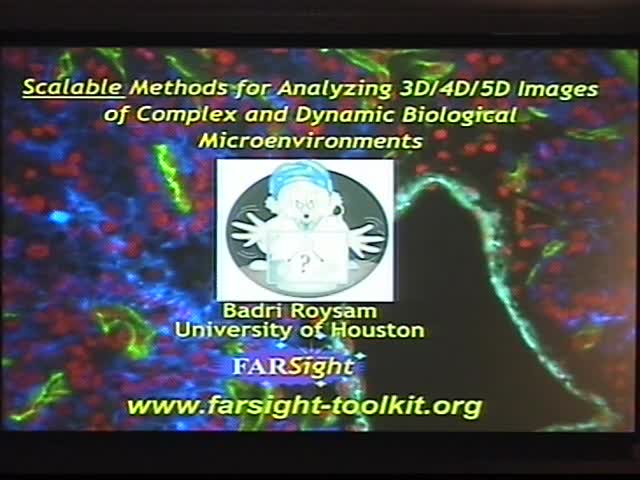Scalable methods for analyzing 3D/4D/5D Images of Complex and Dynamic Biological Microenvironments
Presenter
November 14, 2011
Keywords:
- Optical
MSC:
- 78A60
Abstract
Modern optical microscopy has grown into a multi-dimensional imaging
tool. It is now possible to record dynamic processes in living specimens in
their spatial context and temporal order, yielding information-rich 5-D
images
(3-D space, time, spectra).Of particular interest are complex and dynamic
tissuemicroenvironments that play critical roles in health and disease,
e.g., tumors,
stem-cell niches, brain tissue surrounding neuroprosthetic devices, retinal
tissue, cancer stem-cell niches, glands, and immune system tissues.
The task of analyzing these images exceeds human ability due to the sheer
volume of the data (images routinely exceed 20GB in size), its structural
complexity, and the dynamic behaviors of cells and organelles. First,
there is a need for automated systems to assist the human analyst to map
the tissue anatomy,
quantify structural associations, identify critical events, map event
locations
and timing to the tissue anatomic context, identify and quantify spatial
and
temporal dependencies, produce meaningful summaries of multivariate
measurement
data, and compare perturbed and normal datasets for testing hypotheses,
exploration, and
systems modeling. Beyond automation, there is a need for ³computational
sensing² of tissue patterns and cell behaviors that are too subtle for the
human visual system to detect.
In this talk, I will describe large-scale application of image processing,
active machine learning, multivariate clustering, and parallel computation
methods that enable scalable analysis of multi-dimensional microscopy
data. A particularly valuable application of these methods is to validate
the large-scale automated analysis results. All of the software from this
work is free and open source (www.farsight-toolkit,org).
